Sicily is a land of sun and sea, I don't deny it, but also of mountains. Yes, of mountains sometimes neglected even by the islanders themselves, but which hide the true essence of Sicily, at least mine.
My village is Pioppo, a fraction of Monreale that houses the most beautiful church in the world. It is located in a valley between two mountain chains that opens onto the sea forming the Conca d'Oro.
From Pioppo you can see the sea and, on clear days, even the Aeolian Islands. In winter there is snow and until the first half of the last century on Mount Pizzuta there were the neviere snow stacks that became ice and where the ice was kept throughout the summer which was then used for ice creams in nearby Palermo.
I lived in the village until I was 26, then I moved to Milan for work.
I hated the town and loved it with all my might.
Sometimes I think of it with nostalgia, other times with so much anger at all its contradictions that, as an ancient engraving on the Palazzo Pretorio in Palermo says, Genius devours him and feeds strangers.
But the village always remains within me. And that land can offer many culinary delicacies. I could fill pages with our local specialties: carduna bruricati, u semifreddo ru zzu Teteddu, cacocciuli a viddanedda, mulanciane ammuttunate, pasta or furno, spitini ra signorina Maria ... but here I am obliged to choose only one.
Torn between my aunt's baked pasta (she doesn't take offense mom, but nobody does it like her aunt) and the sfincione (thick pizza) that the family knows how to make in an exquisite way.
I chose the latter, for a very simple reason: I know how to do it too and I do it very often in my adoptive town, but still mine, Milan.
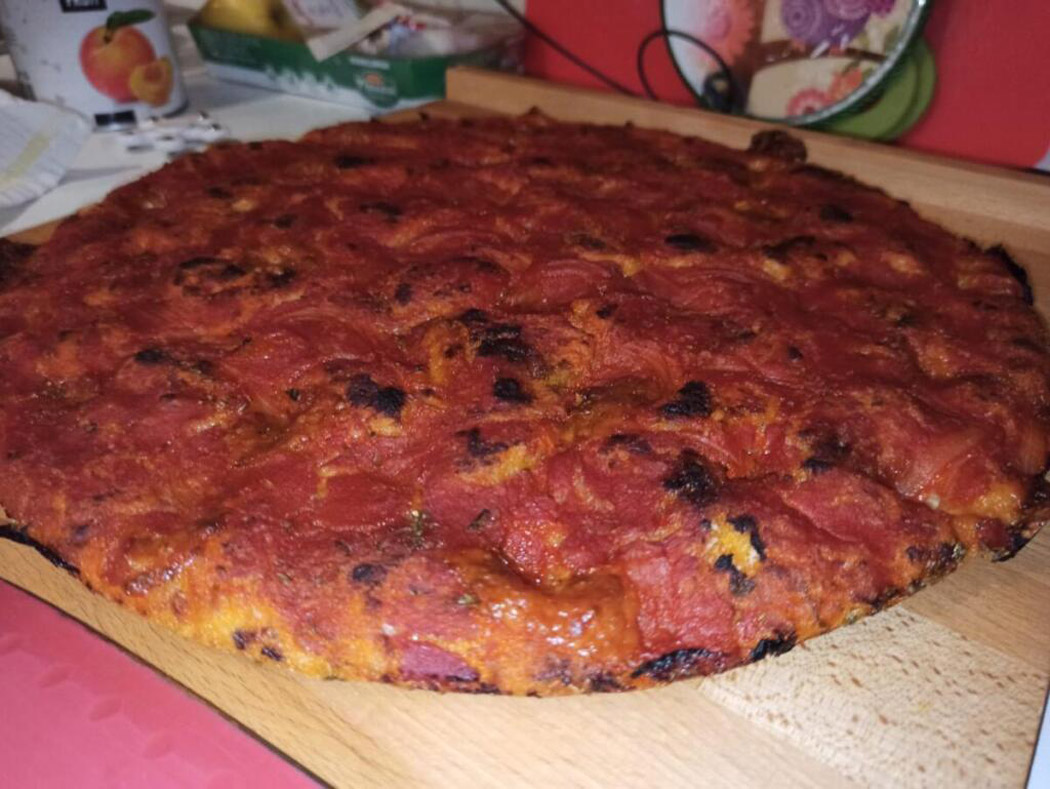
What is sfincione?
A pizza, or rather halfway between a pizza and a focaccia. I immediately specify that sfincione is not an exclusive from Pioppese and exists throughout the province of Palermo and beyond (it also exists in Catania (LINK) where it is not a pizza but a dessert).
But they are all different versions: the "main" sfincione is from Palermo, the city that I love, and it is thicker and spongy and much greasier.
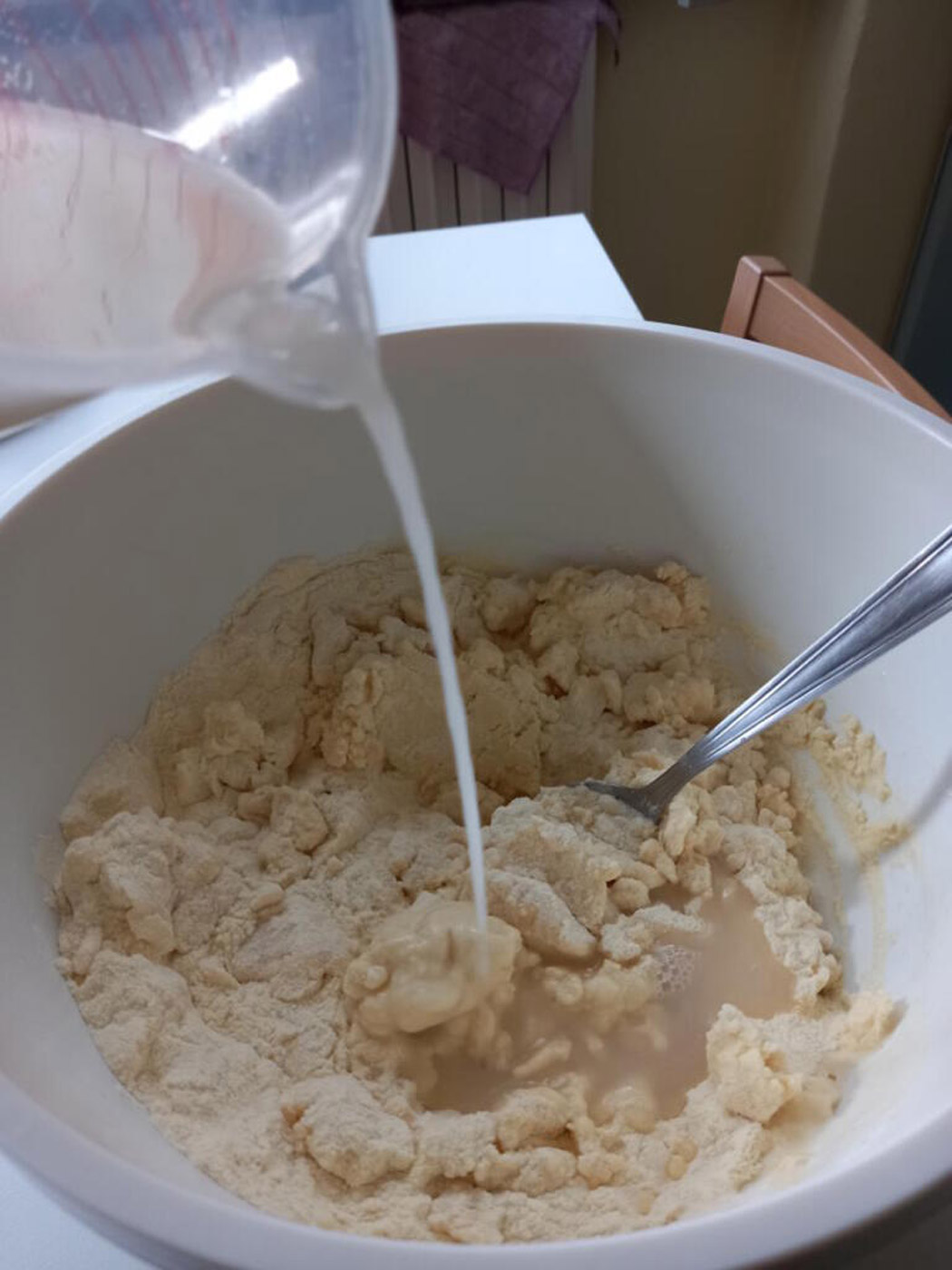
Here I will talk about the Pioppese one, yet not a Pioppese one in general but the version made by my family. Because you know, local recipes are never precise and every good mom has a version of her that she likes and that becomes a dish of the heart.
I begin by saying that the sfincione is for get togethers and celebration, or rather on the eve. In fact, it is often eaten on Saturday evening and it is certainly present in all tables on 7 December, the eve of the feast of Mary Immaculate (the most heartfelt feast in Pioppo), and at the dinner on 24 December on Christmas Eve.
On these occasions it is accompanied by the typical battered and fried vegetables. First of all the bruricated (buried) thistles, that are buried and made to grow for several days underground to give a particular sweetness and tenderness.
It is a "hasty" dish, in fact even bakeries do it and you can go and get a pan if guests suddenly arrive, but it must be eaten strictly with your hands.
Recipe of Sfincione
But let's get down to business, ready to get your hands dirty?. The amounts are what I use for 3 very hungry people:
- 500 g of re-milled durum wheat semolina, preferably Italian, even better if Sicilian
- 450/500 ml of water, preferably pioppese but it does the same
- 2 g of dry powdered brewer's yeast (this is my innovation, mum and aunts in fact use 7 g, the whole sachet, or 25 g of the fresh one, and let it rise 2/3 hours, I prefer 2g and I keep it for 24 hours to rise)
- Salt to taste
- a pinch of sugar
- Extra virgin olive oil
- Rustic tomato puree, or peeled tomatoes
- A lot, a lot, a lot of onion (it is added to taste, for example my mom doesn't like it and makes a little flan dish for herself without it but I call that an affront)
- Oregano to taste
- Breadcrumbs, preferably rustic
- Fresh pioppese Caciocavallo cheese, which is very similar to Ragusa
- Anchovies in oil.
Some people also add some olives, in my opinion it doesn't matter.
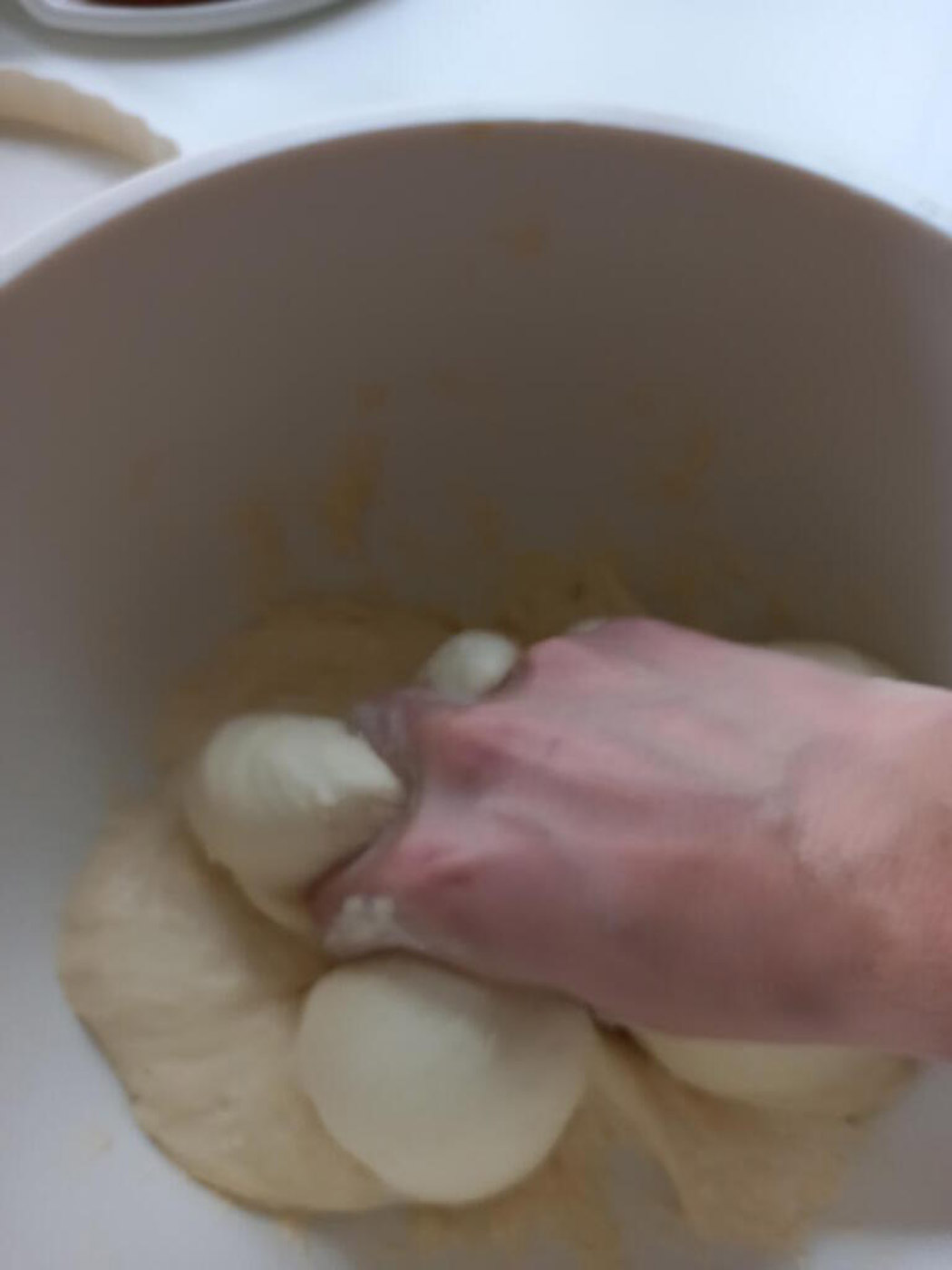
Mix the water, flour, yeast and a pinch of sugar, until the dough is slightly less liquid than a batter, trying not to make lumps. The trick is to knead with your hands adding the water little by little, making it absorb by the flour from time to time.
In the final phase you have to knead by beating the dough as if they were eggs using your hand whisk.
After having "beaten" the pasta for at least 10 minutes, add the salt and continue to beat for another 5/10 minutes to mix well. I recommend: always taste the dough.
At this point let it rise for an hour and a half at room temperature covered with a cloth and then give it a second stir. Cover again and leave to rise for 18/20 hours at a not too high temperature: in winter I leave it out with the heating at minimum, in summer I put it on the top shelf of the fridge.
After about 16 hours, if you have put it in the fridge, you take it out to settle. After the 18/20 hours mentioned above, it must be poured into the pan, but first it is necessary to put a large amount of oil in the pan.
Attention: it must not be greasy, the sfincione must float in oil. Pour out the dough, roll it out with greased fingertips, cover with a cloth and let it rest for another 2 hours.
Now you can go to the dressing. Fry the onion with EVO oil, a lot, a lot of onion, cut as you like (usually in wedges), then add the tomato and let it cook.
After two hours, grease the dough from the pan (provided that it has not already been greased with the oil from the pan during the spreading) and put in the caciocavallo cut into cubes. You have to press it on the pasta so that it "sticks", then put the anchovies with the same technique, then sprinkle the whole surface with breadcrumbs (some people also put a sprinkling of grated aged caciocavallo).
On the breadcrumbs put plenty of tomatoes and onions that you have prepared in the meantime and a nice sprinkling of oregano on top.
Meanwhile, preheat the oven to maximum temperature and, when it is hot, bake the Sfincione on the middle shelf and immediately lower the temperature to 200°. You can use a ventilated or closed oven, as you prefer.
When it starts colouring on the top it is almost ready, but I always recommend checking the bottom with the help of a spatula. Time depends on the oven but not less than half an hour.
Enjoy your meal and if you like, visit Pioppo!



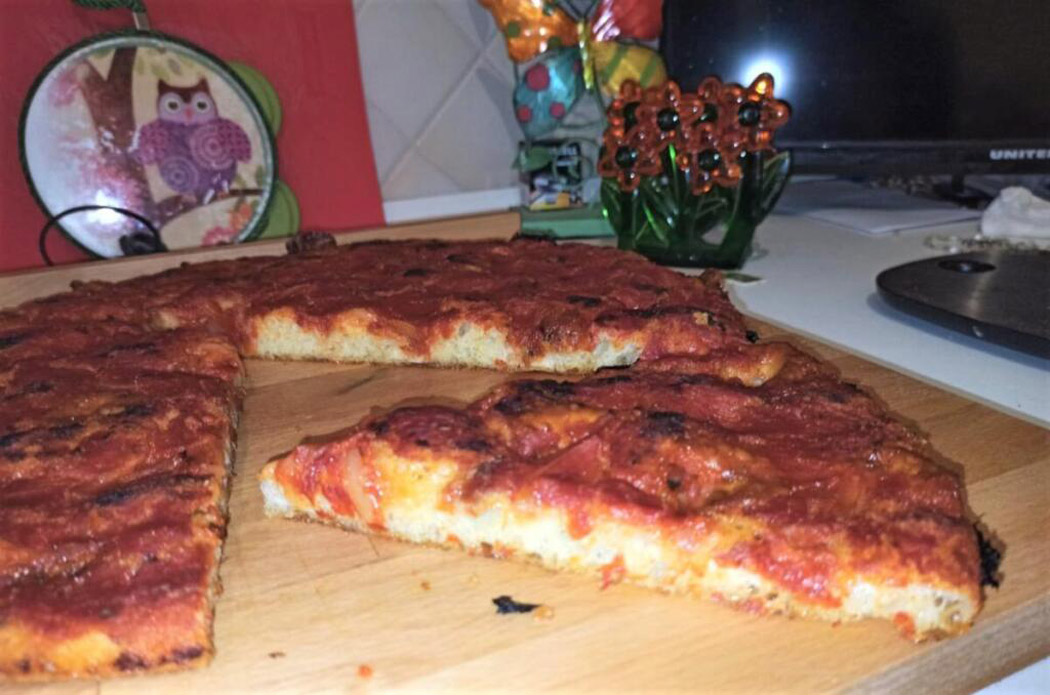


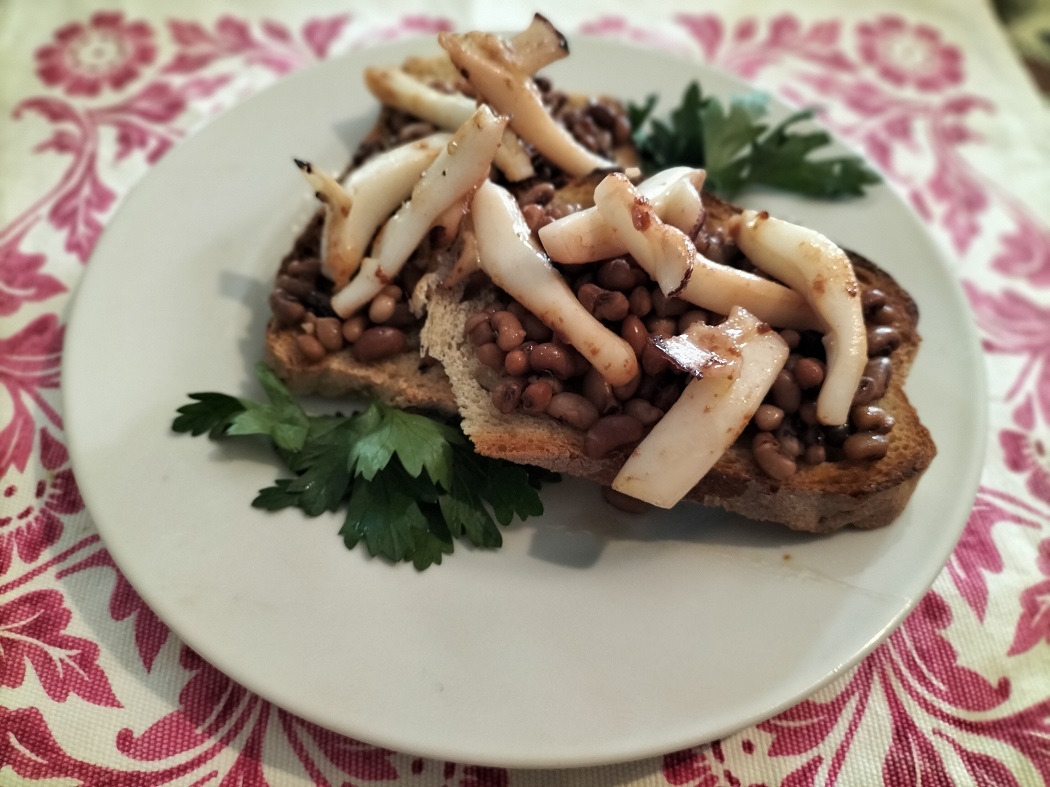


Follow us